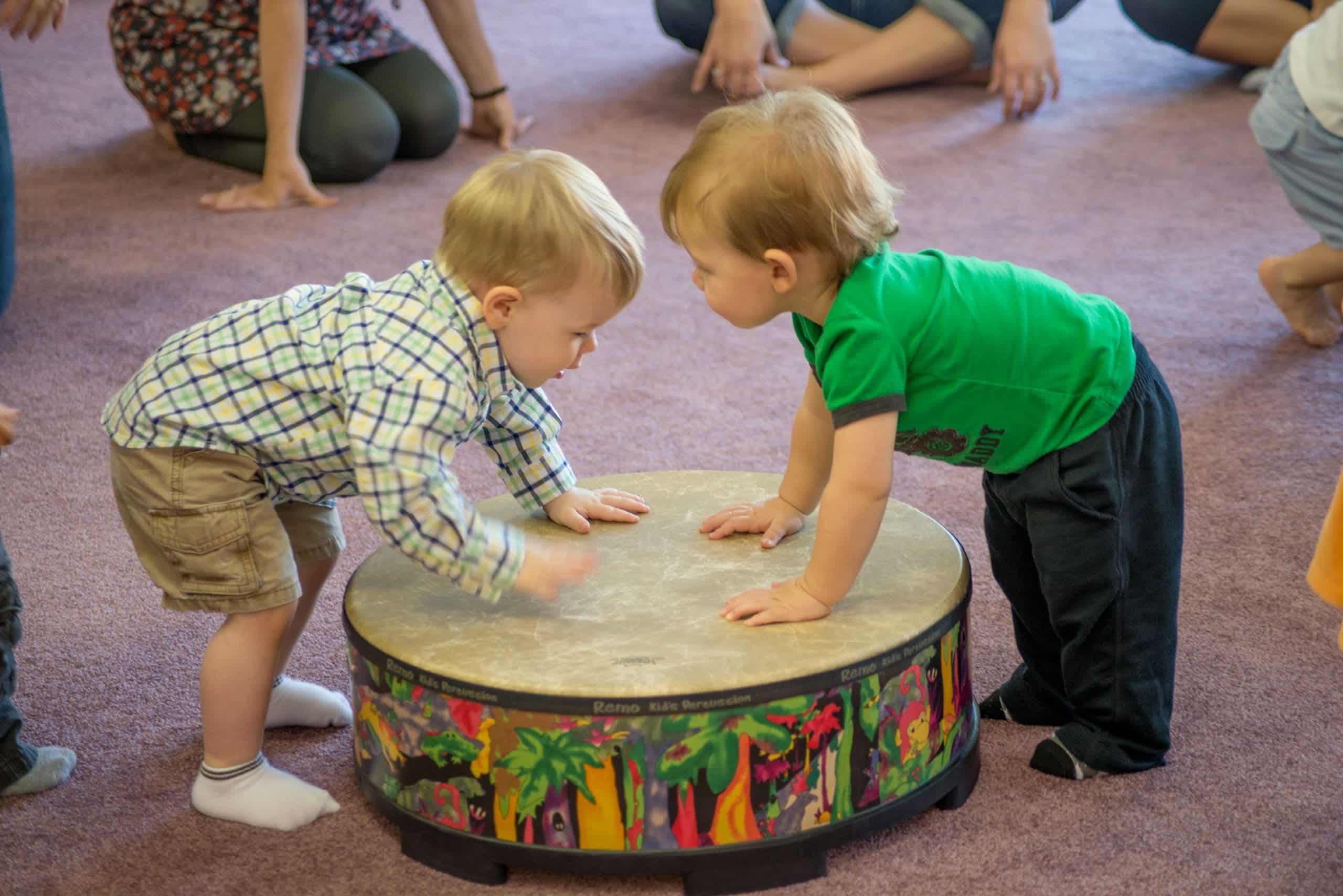Parenting Tip: Sing, play, and count in 3’s
Why? Researchers, scientists, and teachers have long recognized the link between music and math, but the benefits seemed to be long-term – later when children were learning math in school. The exciting reality is that even very young children are unknowingly learning math as they participate in early childhood music and movement classes.
How? Look at the Ball Play activity. Speak the words to ‘Roly Bouncy,’ as you play (or play along to the track on Kindermusik’s Playtime CD), and enjoy the 1-2-3 feeling of the chant. Watch the ‘Outdoor Sounds’ video, and talk about the different timbres of each sound. Then, go on an outdoor field trip, right at home – what do you hear? What about the sounds inside your house? Cue up the ‘Hop to It’ track (also on Kindermusik Playtime), and have fun bouncing around the room with your child – counting ‘1-2’ the whole way!
Want to Learn More?
Read more, on our blog, about 3 ways children learn math, through music!
Kindermusik’s 7-year Continuum: Kindermusik parents help babies experience rhythms, timbres, and musical meter (grouping of beats into 2’s, 3’s, 4’s, etc). As a toddler, Kindermusik kids begin to count to 3 along with the class, and move their own bodies & instruments in patterns of 3. Kindermusik preschoolers begin to connect graphic representations of rhythm & beat to the sounds they are hearing (like chanting: ‘dust, dust, dust!’ as they ‘read’ pictures of 3 featherdusters, from left to right). In Young Child classes, big kids learn that beats are grouped into sets, by barlines, and begin reading traditional rhythmic notation in the songs that they sing, read & play.
Kindermusik’s 7-year Continuum: Kindermusik parents help babies experience rhythms, timbres, and musical meter (grouping of beats into 2’s, 3’s, 4’s, etc). As a toddler, Kindermusik kids begin to count to 3 along with the class, and move their own bodies & instruments in patterns of 3. Kindermusik preschoolers begin to connect graphic representations of rhythm & beat to the sounds they are hearing (like chanting: ‘dust, dust, dust!’ as they ‘read’ pictures of 3 featherdusters, from left to right). In Young Child classes, big kids learn that beats are grouped into sets, by barlines, and begin reading traditional rhythmic notation in the songs that they sing, read & play.


Leave a Reply